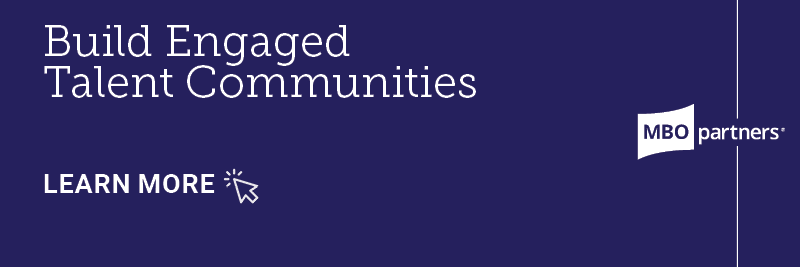How to Manage the Multiple Dimensions of an Optimized Workforce

- Managing a high-performing team used to be relatively simple.
- Various factors contribute to a more complex workforce for enterprises than once existed.
- Effective management of a multidimensional workforce may require a range of approaches, each tailored to specific team composition.
All employees, all working in company offices—managing a high-performing team used to be relatively simple. Then came the pandemic lockdown, followed by the Great Realization. An increasing number of workers are choosing to become independent business owners. Remote work and digital nomadism entered the mainstream as established work styles. Workers of traditional retirement age are staying in the workforce as Gen Z enters the job market.
Four Dimensions of Today’s Enterprise Workforce
These factors contribute to a more complex workforce for enterprises than once existed. Project leads must be able to manage their team along at least these four dimensions:
Generation
A multigenerational workforce is not uncommon, but the nature of today’s multigenerational workforce is different from previous scenarios. With Baby Boomers on one end and Gen Zers on the other, managers must take significantly different perspectives, work habits, and communication styles into account to foster team productivity.
Location
Remote work styles were gaining ground, though slowly, before the pandemic lockdown. Now that enterprises have figured out how to ensure security and connection in a remote workforce, many companies offer remote work—either full-time or part-time—for more and more employees.
Employee vs Independent
Independent professionals used to be short-term hires, brought in for single projects. The business benefits of an optimized workforce—a strategic mix of employees and independent professionals—have become apparent to many enterprises. As a result, independent talent is becoming a permanent fixture on a company’s teams and companies are focused on becoming Clients of Choice for the high-value independents they want to continue to engage.
Role
Traditionally, independent professionals were often limited to non-core roles—tactical and support rather than strategic. This has changed in today’s business environment. Independents with high-value and hard-to-find skills are filling keyoles on the teams and in the companies they work for.
Managing a Multidimensional Workforce
Managing these dimensions can’t rely on traditional methods. In fact, effective management of a multidimensional workforce may require a range of approaches, each tailored to specific team composition. Getting to know members along with thoughtful planning can contribute greatly to fostering a high-performing team. These three tips might be a good place to start.
Hone Soft Skills
Many of the skills required to work in and manage a multidimensional team are so-called soft skills. For example, well-developed verbal and written communication skills can help make connections between team members of different generations. While email is an integral element in business communications, make it easy to connect informally by using a platform like Slack or Microsoft Teams to foster conversations and share information. Empathy is the ability to understand another’s experience or viewpoint even though it may be quite different. This is invaluable in a multidimensional team as it helps breaks down barriers of misunderstanding and arrive at solutions that work for everyone. Hone these and other soft skills and encourage their development among team members.
Go for Virtual Team Building
Team building and bonding are important for accommodating the differences among team members. Put virtual get-togethers in place of group happy hours or other in-person activities. For example, a Friday question-and-answer session hosted by different team members each week can encourage queries about topics beyond work. Team members from different countries, for example, can share about their lifestyles and country customers, or different generations can compare notes about various subjects.
Clear Out Unconscious Biases About Independent Professionals
Especially in companies where having independent talent as a significant portion of the workforce and in more strategic roles represent a significant change, some “unconscious bias busting” on the part of the manager and perhaps some team members may be needed. For example, there may be resistance around providing “company confidential” information needed by an independent contractor because in the past independents have played minor support roles. Raising awareness and letting go of unconscious biases is important to team performance.
Categories
Subscribe to the Insights blog to get weekly insights on the next way of working
Source, engage, and manage top talent talent through MBO's direct sourcing platform
Learn more about MBO
Learn how to start, run and grow your business with expert insights from MBO Partners
Learn how to find, manage and retain top-tier independent talent for your independent workforce.
MBO Partners publishes influential reports, cited by government and other major media outlets.
Research and tools designed to uncover insights and develop groundbreaking solutions.



